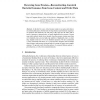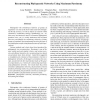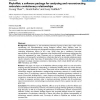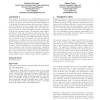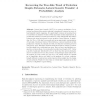29 search results - page 3 / 6 » Reconstructing Histories of Complex Gene Clusters on a Phylo... |
WABI
2004
Springer
2004
Springer
Reversing Gene Erosion - Reconstructing Ancestral Bacterial Genomes from Gene-Content and Order Data
13 years 10 months ago
In the last few years, it has become routine to use gene-order data to reconstruct phylogenies, both in terms of edge distances (parsimonious sequences of operations that transform...
CSB
2005
IEEE
13 years 10 months ago
2005
IEEE
Phylogenies—the evolutionary histories of groups of organisms—are one of the most widely used tools throughout the life sciences, as well as objects of research within systema...
BMCBI
2008
13 years 4 months ago
2008
Background: Phylogenies, i.e., the evolutionary histories of groups of taxa, play a major role in representing the interrelationships among biological entities. Many software tool...
ISDA
2008
IEEE
13 years 11 months ago
2008
IEEE
Gene network reconstruction is a multidisciplinary research area involving data mining, machine learning, statistics, ontologies and others. Reconstructed gene network allows us t...
RECOMB
2012
Springer
11 years 7 months ago
2012
Springer
Abstract. Lateral gene transfer (LGT) is a common mechanism of nonvertical evolution where genetic material is transferred between two more or less distantly related organisms. It ...
